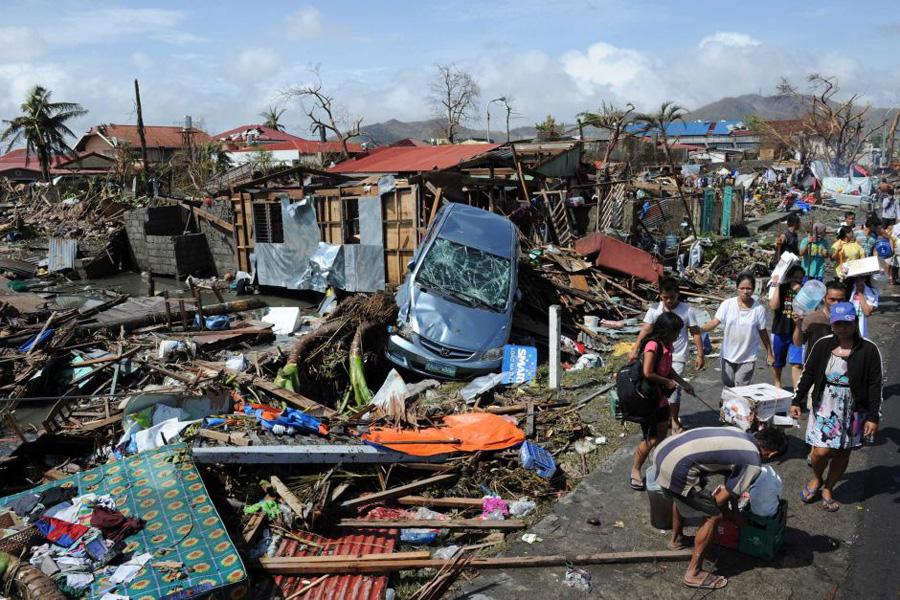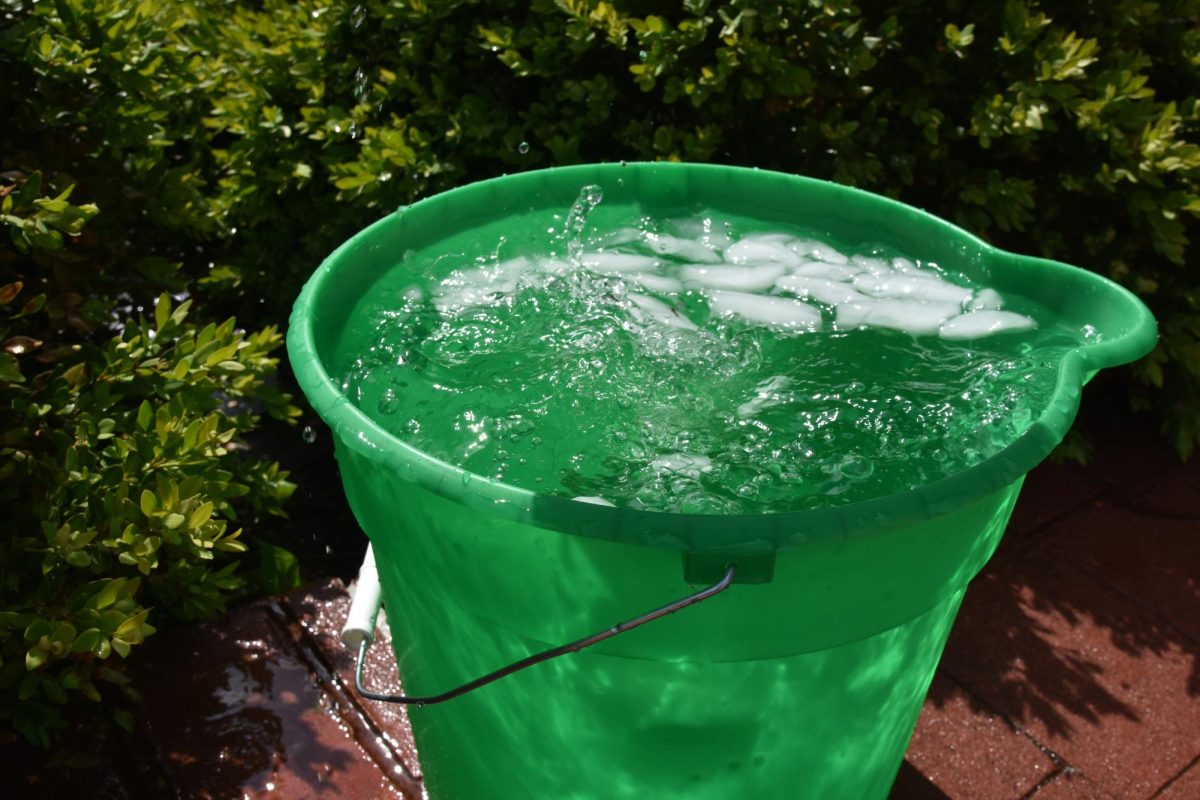Community Outreach at West (C.O.W.) is holding a donation appeal to assist the victims of the tropical storm. You can help by giving money during either first lunch or second lunch from Nov. 13 – Nov. 18.
Displaced survivors scavenged for food, water and medicine following the super typhoon that killed an estimated 10,000 people in the central Philippines on Nov. 7.
As President Benigno Aquino sent out hundreds of soldiers in the coastal city of Tacloban to subdue the looting, the scale of the disaster become clearer as reports emerged of thousands of people missing and images showed apocalyptic scenes.
One of the most powerful storms ever recorded, typhoon Haiyan (also known as Yolanda) leveled Basey, a seaside town in the Samar province about six miles across a bay from Tacloban in the Leyte province, where at least 10,000 people were killed, according to officials. About 2,000 people were missing in Basey alone, according to the Governor of the Samar province.
The United Nations said officials in Tacloban, which bore the brunt of the storm on Friday, had reported one mass grave of 300-500 bodies. More than 600,000 people were displaced by the storm across the country and some have no access to food, water, or medicine, the U.N. says.
Flattened by surging waves and monster winds up to 235 mph, Tacloban, 360 miles southeast of Manila, was relying almost entirely for supplies and evacuation on just three military transport planes flying from nearby Cebu city.
Most of the damage and deaths were caused by huge waves that inundated towns, washed ships ashore and swept away coastal villages in scenes reminiscent of the 2004 Indian Ocean tsunami.
Haiyan is estimated to have destroyed about 70 to 80 percent of structures in its path. The damage to the coconut- and rice-growing region was expected to amount to more than 3 billion pesos ($69 million), Citi Research said in a report, with “massive losses” for private property.
International aid agencies said relief resources in the largely Roman Catholic Philippines were stretched thin after a 7.2 magnitude quake in central Bohol province last month and displacement caused by a conflict with Muslim rebels in the southern Zamboanga province.
Tacloban’s administration appeared to be in disarray as city and hospital workers focused on saving their own families and securing food supplies.
Operations were further hampered because roads, airports and bridges had been destroyed or were covered in wreckage. Threatening to add to the crisis in the impoverished area, a tropical depression carrying heavy rain was forecast to arrive in the region as early as Tuesday.
Aquino, facing one of the biggest challenges of his three-year rule, deployed 300 soldiers and police to restore order in Tacloban after looters rampaged through several stores.
Aquino, who, prior to the storm, said the government was aiming for zero casualties, has shown exasperation at conflicting official reports on damage and deaths. One TV network quoted him as telling the head of the disaster agency that he was running out of patience.
The official death toll is likely to climb rapidly once rescuers reach remote villages along the coast, such as Guiuan, a town in eastern Samar with a population of 40,000 that was largely destroyed.
“The only reason why we have no reports of casualties up to now is that communications systems … are down,” said Colonel John Sanchez, posting on the Armed Forces Facebook page.
About 400 people were confirmed dead in the Samar province, according to provincial governor Sharee Ann Tan. Baco, a city of 35,000 in Oriental Mindoro province, was 80 percent under water, the U.N. reported.
Other countries that were affected by Haiyan, such as Vietnam, Taiwan, and China escaped disaster as they were hit by a much-weakened typhoon.
Almost immediately after the storm hit, U.S. aid groups launched a multimillion-dollar relief campaign. President Barack Obama also pledged to help more if necessary.



![Smiling in a sea of Longhorns, Fox 2 reporter Ty Hawkins joins junior Darren Young during the morning Oct. 3 pep rally. The last time West was featured in this segment was 2011. “[I hope people see this and think] if you come to [Parkway] West, you will have the time of your life because there are so many fun activities to do that make it feel like you belong here. I was surprised so many people attended, but it was a lot of fun,” Young said.](https://pwestpathfinder.com/wp-content/uploads/2025/10/Edited2-1200x798.jpg)
![West High seniors and families listen as a representative of The Scholarship Foundation of St. Louis, Teresa Steinkamp, leads a Free Application for Federal Student Aid (FAFSA) workshop. This session, held in the library, provided guidance on financial aid, scholarships and student loan options. “This event is very beneficial for any seniors who are applying to or considering applying to colleges after high school [because] the cost of college is on the rise for seniors and parents,” college and career counselor Chris Lorenz said.](https://pwestpathfinder.com/wp-content/uploads/2025/09/DSC_4478-1200x778.jpg)
![Senior Kamori Berry walks across the field during halftime at the Homecoming football game on Sept. 12. During the pep assembly earlier that day, she was pronounced Homecoming Queen. “I thought it was nice that the crowd [started] cheering right away. I know [my friends] were really excited for me, and my family was happy because typically non-white people don't win,” Berry said.](https://pwestpathfinder.com/wp-content/uploads/2025/09/DSC7046-Enhanced-NR-1200x798.jpg)



![Pitching the ball on Apr. 14, senior Henry Wild and his team play against Belleville East. Wild was named scholar athlete of the year by St. Louis Post-Dispatch after maintaining a high cumulative GPA and staying involved with athletics for all of high school. “It’s an amazing honor. I feel very blessed to have the opportunity to represent my school [and] what [it] stands for,” Wild said.](https://pwestpathfinder.com/wp-content/uploads/2025/05/unnamed-6-1200x714.jpg)
![The Glory of Missouri award recipients stand with their certificates after finding out which virtue they were chosen to represent. When discovering their virtues, some recipients were met with contented confirmation, while others, complete surprise. “I was not at all surprised to get Truth. I discussed that with some of the other people who were getting the awards as well, and that came up as something I might get. Being in journalism, [Fellowship of Christian Athletes and] Speech and Debate, there's a culture of really caring about truth as a principle that I've tried to contribute to as well. I was very glad; [Truth] was a great one to get,” senior Will Gonsior said.](https://pwestpathfinder.com/wp-content/uploads/2025/04/Group-Glory-of-Missouri.jpg)
